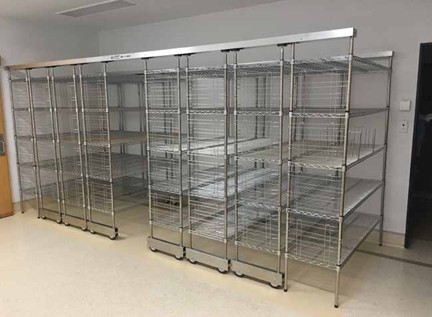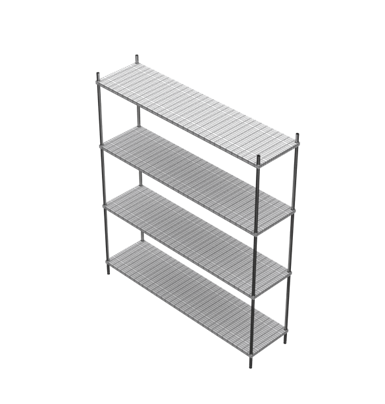Hospitals are complex places where small changes in workflow can have a huge impact. One often overlooked but vital factor is how supplies and equipment are stored and managed. Nurses on wards and managers balancing budgets both know that chaos in the storeroom quickly trickles down to delays in patient care, misplaced items, or even wasteful over-ordering. This is where modular shelving steps in—not just as a piece of hospital furniture, but as an integral tool for effective healthcare delivery.
Modular shelving means adjustable, flexible storage systems that can be reconfigured as your needs change. In healthcare, where priorities and layouts often shift, this adaptability brings clear advantages:
Efficient use of space: Shelves can be tailored to fit awkward nooks, create extra storage in tight spaces, or expand as supply needs grow.
Faster access: Easily separate medications, consumables, and equipment for specific wards or specialties, reducing the time it takes for staff to locate items.
Enhanced hygiene: Open designs (like mesh) allow air to circulate and make it easier to spot and clean up dust or spills—a key part of infection control protocols.
Research has found that well-designed storage systems reduce staff fatigue, help avoid supply shortages, and support infection prevention measures. These aren’t just logistical improvements; they directly affect patient safety and staff satisfaction.image.jpg
Academic studies highlight several critical benefits for hospitals when upgrading from basic fixed shelving to modular, mesh-based solutions:
Reduced infection risk: Dust and pathogens collect easily on solid shelves and in hidden corners. Mesh shelving improves airflow, minimises dust build-up, and is simple to wipe down, aiding compliance with strict infection control standards.
Improved workflow: Modular shelving allows storage to be reorganised quickly after stocktakes or policy changes, and mobile shelves with smooth-rolling castors make it easy to move supplies to where they’re needed most.
Customisation for clinical needs: No ward is the same—as clinical roles evolve, shelving that can be adjusted in height, width, or compartmentalisation allows for safe storage of everything from large equipment to fragile vials.image.jpg
Let’s take the example of a busy surgical ward. A modular shelving system with adjustable shelves and dividers means wound care supplies are grouped together, sorted by size and type. Nurses know exactly where to find what they need—reducing scramble and stress during critical moments.
For purchasing managers, modular shelving simplifies compliance and stock audits. Transparent layouts make inventory counts accurate and fast, helping avoid both shortages and costly surpluses.
Traditional shelving can be heavy, cumbersome, and difficult to keep clean. Leading systems today use stainless steel mesh, which is:
Corrosion-resistant: Stands up to frequent cleaning and harsh disinfectants.
Long-lasting: Reduces replacement costs over time.
Flexible: Can be reconfigured or moved as your facility’s needs evolve.
These features are not just theoretical. They address the real risk factors identified by infection control experts and workplace safety research.

If you’re looking to see what modular shelving can achieve in a healthcare setting, explore:
Wiremax Shelving – Ideal for bulk storage areas, general wards, or back-of-house spaces, with heavy-duty capacity and endless configuration options.

MediMesh Shelving – Perfect for sterile areas like ICUs and theatres, combining stainless steel hygiene benefits with open mesh airflow for infection control.
If you’d like guidance on selecting the right shelving system for your facility, contact our team at sales@emeryindustries.com.au — we’re ready to help tailor a solution to your needs.
References:
Ulrich, R. S., et al. (2020). “Designing for Healthcare Safety.” Health Environments Research & Design Journal.image.jpg
Sehulster, L., et al. (2004). “Guidelines for Environmental Infection Control in Health-Care Facilities.” CDC.
Gurses, A. P., Carayon, P. (2007). “Performance obstacles of intensive care nurses.” Nursing Research.
https://ppl-ai-file-upload.s3.amazonaws.com/web/direct-files/attachments/images/32313389/2e8b0b95-73a2-4c35-b16b-be8e3a8ebc24/image.jpg